2023 Business Benchmarks: How does Minnesota compare?
Economy: High costs and a worker shortage
The measure of a strong economy is complicated but can be boiled down to retaining and attracting businesses and workers and outpacing the competition. Minnesota’s rankings in these indicators vary, but it falls in the bottom half of the nation in four out of six listed below. The state’s historic low unemployment rate is a positive, but also shows the ongoing tightness of our labor market. Taking steps to make Minnesota more affordable for businesses and households and finding both near- and long-term workforce solutions will help the state improve its economy overall.
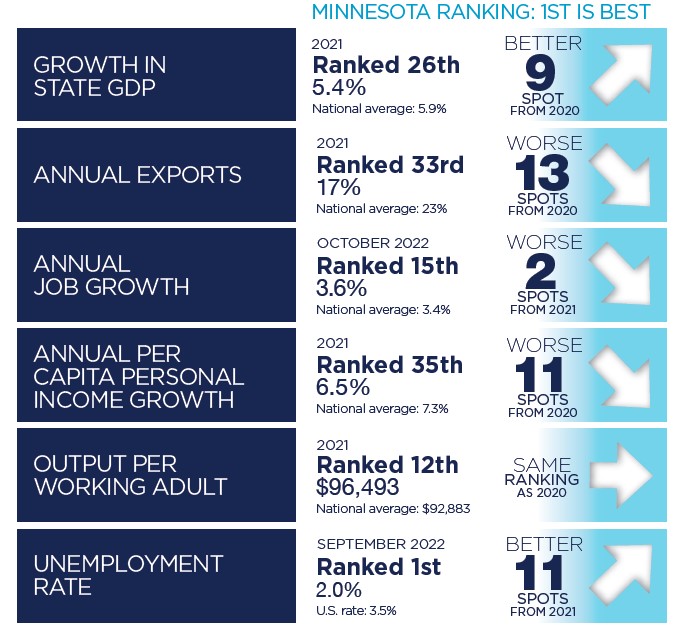
Taxes: Perennially high costs inhibit growth
![]()
Inflation and high costs are impacting consumers across the nation. But in some states, like Minnesota, businesses and families are experiencing a compounding effect from self-imposed headwinds like high tax rates. Minnesota’s tax burdens continue to be among the highest in the nation, with the sixth-highest individual income tax rate and the corporate tax rate set to be highest in the nation by 2024. Other states - 27 states, to be exact - have reformed their tax systems in the last two years to become more attractive for business investment, talent and growth. The fact that these states took action on the heels of the pandemic amid all of its uncertainty shows that forward progress can be achieved. Inaction is also a choice and could make Minnesota’s tax structure one of the least competitive in the nation.
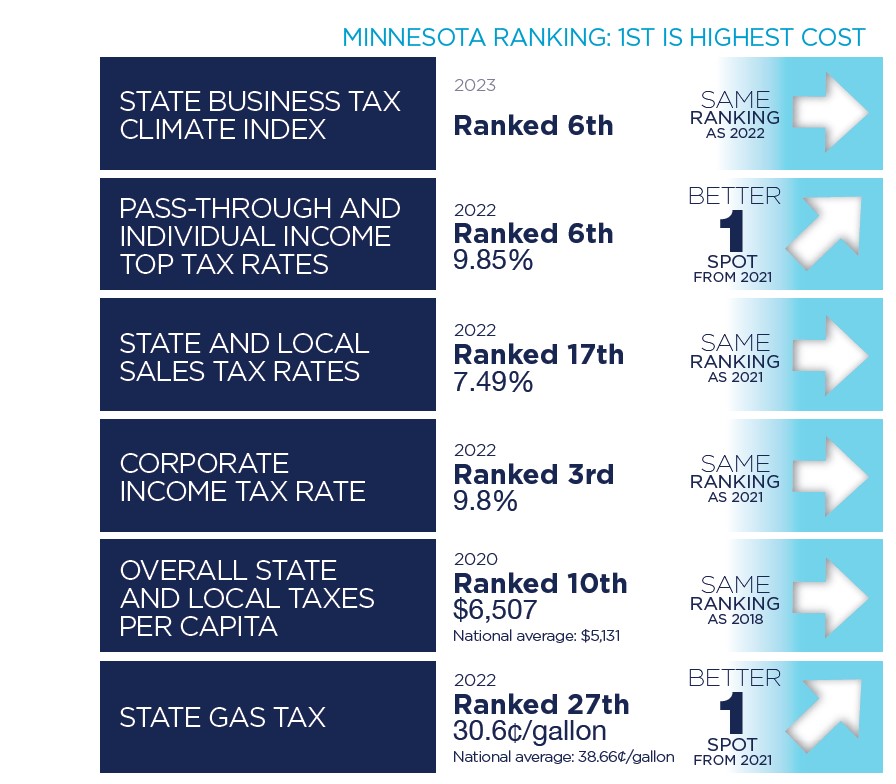
Cost of doing business: Worrisome cost burdens
Rising costs and inflation are increasing challenges for businesses and households alike. Electricity costs have increased and health insurance rankings have bounced around in recent years, from middle of the pack in 2019 (23rd in the nation) to 38th in 2020, and now back up to 19th. The cost of doing business is aligned closely with the cost of living to create a business climate that fosters business growth and long-term talent pipeline.
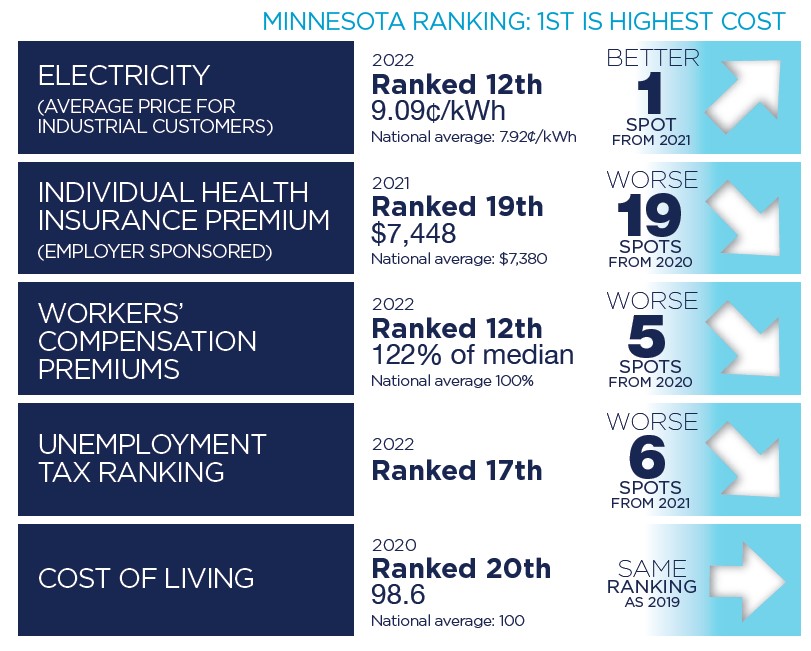
Innovation: Minnesota’s uncashed lottery ticket
![]()
According to the Minnesota Chamber Foundation’s report Minnesota entrepreneurship: A turning point, the state is advancing its long-held legacy of supporting startups, with a still-impressive rank of fourth overall in five-year business survival rate. There is no doubt Minnesota is a hotbed for knowledge-based innovation and research universities. However, the new employer business rate ranks in the bottom third, with other states offering more venture capital. Strengthening the state’s startup ecosystem can provide essential infrastructure, including funding, networking, mentoring and technical assistance to support further entrepreneurship gains.
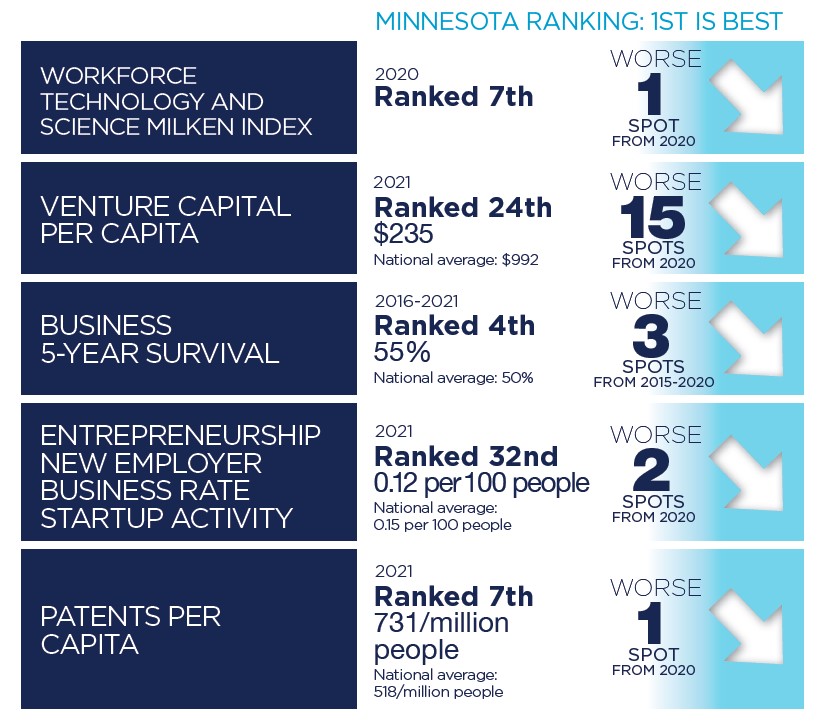
Infrastructure: Steady progress and well-positioned

Investment in the state’s transportation infrastructure is necessary for the efficient movement of people and goods. Minnesota has advantages in shipping and logistics, with total freight rail miles outperforming its size, an award-winning international airport and major shipping ports providing access to global markets. Because Minnesota is a high-cost state, businesses are willing to direct resources to ensure a sound system, but they also expect value for every dollar spent. Ongoing strategic investment has improved rankings, moving from near the bottom in overall highway rankings just over a decade ago to near the top third in the most recent measurement.
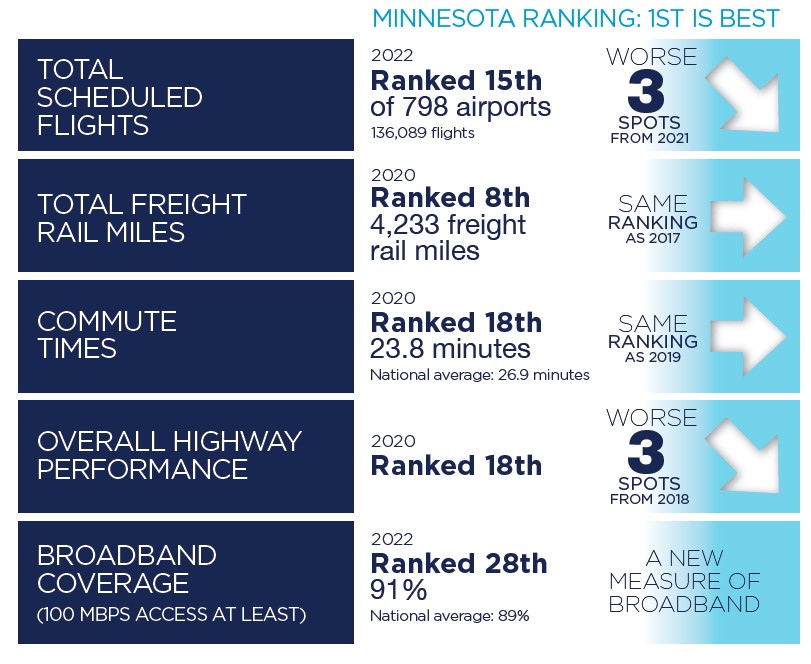
Workforce: Simultaneous strength and challenge

A strong and talented workforce is a tenet of Minnesota’s historical economic strengths. It is also critical for future success. Earlier this year, Minnesota simultaneously experienced a historically low unemployment rate and historically high worker shortage. The state has higher-than-average labor participation and consistently gains workers from overseas. But a negative net domestic migration means Minnesota is losing talent to other states. Test scores declined in Minnesota as well as the nation after COVID-19, while Minnesota saw a slight improvement in 8th-grade reading rankings - there was a concerning drop in 4th-grade reading scores (from 12th in 2019 to 28th in 2022). Minnesota’s workforce is a well-established strength, but steps must be taken to align the talent pipeline with the needs of the future and improve student learning.
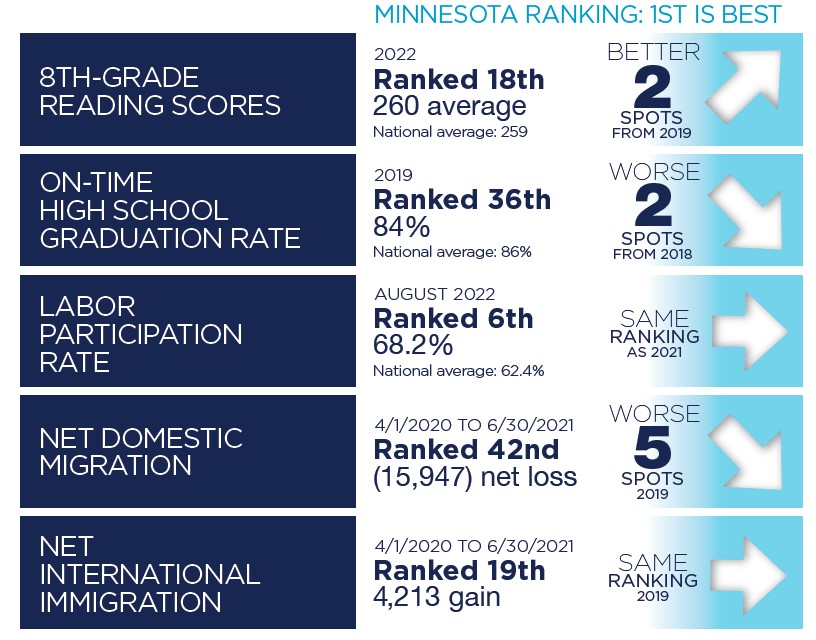
¬
Navigating the 2023 Business Benchmarks report
Questions about the 2023 Business Benchmarks report?
We'd love to hear from you! If you have questions on this year's Business Benchmarks or would like to get involved on the topics listed above, please contact us or reach out to one of our expert staff.






